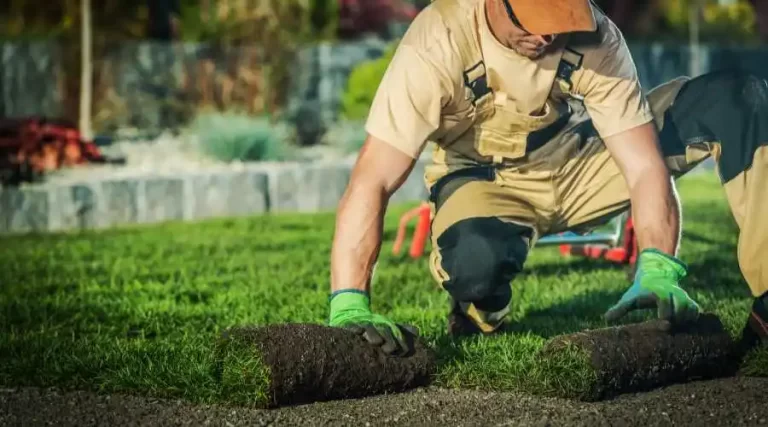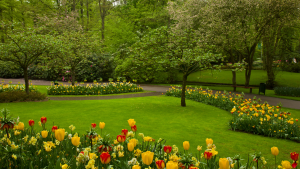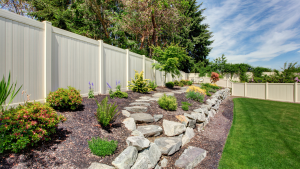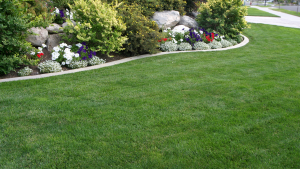Landscaping typically involves two key phases: planning and design, and the actual installation. Both of these phases offer exciting opportunities for personalizing your property and showcasing your unique style. However, several common mistakes tend to be made by homeowners, and often these issues only become apparent when it’s too late, resulting in unfinished work, costly delays, or, in the worst-case scenario, potential accidents.
In this article, we will explore the most prevalent mistakes made during the landscape installation phase and provide valuable tips for avoiding these pitfalls. Landscaping is meant to be an enjoyable endeavor, and with a bit of prior knowledge, you can approach the process with ease and delight, free from unnecessary concerns. ZDR Baton Rouge Landscape Pros have you covered.
Hiring Inexperienced Workers
Many landscaping design tasks may seem as simple as digging holes and planting, leading many homeowners to believe that almost anyone can handle the job. While this might hold true to some extent, there’s a substantial difference between getting the job done and getting it done correctly.
Landscaping companies exist for a reason. Their team members earn their livelihood by planning and executing landscaping features, whether they are elaborate or quite basic. If you lack the time, patience, or appropriate equipment to tackle your landscaping project on your own, do not hesitate to reach out to a professional. However, it is crucial to ensure that the professional you engage has experience in the specific areas relevant to your project.
Even when hiring a professional landscaping company, it’s wise to verify the particulars. For more intricate tasks, such as installing in-ground water features or lighting, inquire whether the team has the requisite expertise in that particular domain. Selecting the right professionals can make all the difference between a job well done and one that leaves you wanting more.
Not Knowing What Requires a License
As previously noted, specific skills are essential for particular landscaping jobs. It’s crucial to understand that experience does not always equate to licensing, and certain jobs demand certification.
For any landscaping installation that involves plumbing or electrical work, it is imperative to engage professionals who hold the requisite licenses in these respective fields. In many regions, hiring unlicensed workers for plumbing or electrical tasks is not only illegal but can also result in fines and a potential loss of insurance coverage. Furthermore, unlicensed workers may not be up-to-date with the latest safety protocols and industry knowledge, making them more prone to potentially hazardous errors. It is essential to be aware of the local laws in your area and hire accordingly to ensure the legality and safety of your landscaping project.
Design and Install Disconnect
Whether you’ve enlisted a professional company to plan and design your property or have personally orchestrated the design, it’s vital to ensure that these two components seamlessly align during the installation phase.
A common issue arises when there is a significant disconnect between the installation team and the designer of the landscaping. This disconnect may result from employing different landscaping companies for distinct tasks, or it could simply occur because you are unable to be present while the crew carries out the installation.
To avert this mistake, it’s advisable, whenever feasible, to contract the same company for both the design and installation of your new landscaping. This approach fosters a more cohesive and collaborative effort among the team, as opposed to having disjointed workers following their own individual approaches. If you’ve taken a do-it-yourself approach to landscape design, make sure to sit down with the installation crew and thoroughly discuss your plans before they commence their work. Whenever possible, be present during the installation process without micromanaging; this helps you stay informed about the progress in your yard.
During these discussions, be sure to highlight any details that may not be readily apparent from the plans. For instance, if you wish to have a specific plant visible from a particular window, clearly communicate that it should be positioned at a specific spot for optimal visibility from all angles. These apparently little elements have a big influence on the success of a landscape installation. Beginning with a clear understanding from the outset ensures that everyone involved shares a common vision, preventing last-minute scrambling and frenetic adjustments at the front door.
Planting Depth
Whether your new landscaping project involves substantial trees, small saplings, or shrubbery, there will be some planting involved. Planting may seem like a straightforward task, but the depth at which you place each plant is critical. It’s a mistake to guess, or allow professionals to guess, the proper planting depth. Each plant should come with specific instructions, ideally attached to the pot or the plant itself.
The reason why this is a crucial mistake to avoid is simple. Plants that are planted either too shallow or too deep are at a higher risk of rapid deterioration. If you’ve invested in partially mature trees, this can lead to significant financial losses. Even if you’re dealing with small, inexpensive plants from a local store, it’s disheartening to watch them wither and die. This setback is not only demoralizing but also time-consuming, as you’ll need to go through the purchasing and planting process all over again.
If your plants don’t come with instructions, With only a little web search, you may find the necessary information on how deep each plant should be planted. Planting too deep can suffocate the plant by impeding its access to vital nutrients, while planting too shallow can expose delicate roots to weather extremes and potential damage from wildlife. If you have a tree or plant for which you cannot find specific instructions, a useful rule of thumb is to plant it at a depth equivalent to the pot it came in. Always follow individual directions when available and rely on general guidelines when necessary to ensure the health and flourishing of your plants.
Attempting Too Much DIY
In today’s uncertain economic climate, many homeowners are increasingly looking for ways to economize. While this is a commendable approach, there are instances where it is more cost-effective and time-efficient to enlist the services of professionals.
As previously mentioned, tasks involving plumbing or electricity necessitate licensed professionals. However, numerous jobs do not require licensing or certification, and these are often the ones homeowners attempt to tackle themselves. While DIY projects can provide a sense of involvement and potential savings, they can also become substantial mistakes.
The first consideration is whether you possess the physical stamina to execute a task correctly. Digging, for instance, is strenuous work, often more challenging than it appears. If you are uncertain about your ability to complete the job safely and within a reasonable timeframe, it’s wise to seek external assistance. The cost will be less than a full-scale landscaping installation, and you’ll spare yourself from excessive physical exertion. The same principle applies to activities like laying sod, preparing a bare yard, and even planting a substantial number of small plants.
Landscaping should be an enjoyable endeavor, and if you find that the outdoors is not your natural habitat, you are likely to become disheartened and frustrated before the project is completed. This frequently leads to plants wilting because they remain in temporary pots for too long, half-finished and oddly-shaped yards, and general dissatisfaction among homeowners.
If your budget allows for it, why not circumvent these pitfalls and complete the job swiftly and accurately with the assistance of professionals?
Ignorance of Local Laws and Utilities
Depending on your location, there may be regulations that either permit or restrict certain property additions. These regulations serve various purposes, such as preserving the historical character of older areas, promoting a consistent appearance in neighborhoods, or ensuring one person’s landscaping doesn’t impede another person’s view or access to communal spaces.
Rather than relying on guesswork regarding compliance with these regulations, it’s prudent to contact your local government offices to inquire about what’s permitted. They will likely provide you with a set of regulations or direct you to a relevant website. It’s essential to keep these regulations accessible and refer to them frequently to prevent costly errors. Depending on your area, violating these regulations can result in fines amounting to hundreds of dollars.
More crucial than neighborhood regulations is the awareness of the locations of underground utility lines. Hitting these lines can lead to flooding, power outages, and even dangerous explosions. Fortunately, this is a preventable error. Reach out to your local utility companies to obtain comprehensive information on the positions of pipes or lines traversing your property. Keep this data readily available as you work and share it with any hired workers.
Depending on your location, utility information may also be accessible through the government office responsible for issuing building permits. Many cities and towns have informative documents readily available, illustrating all the utility lines on properties. In other areas, you may need to contact each utility company individually. Avoid the mistake of omitting any companies; gather all the necessary information to ensure safety.
As demonstrated, avoiding the most common landscaping installation mistakes is primarily a matter of vigilance and preplanning. By carefully considering your approach and making sound hiring decisions, you can achieve a beautiful yard with minimal cost and effort.





